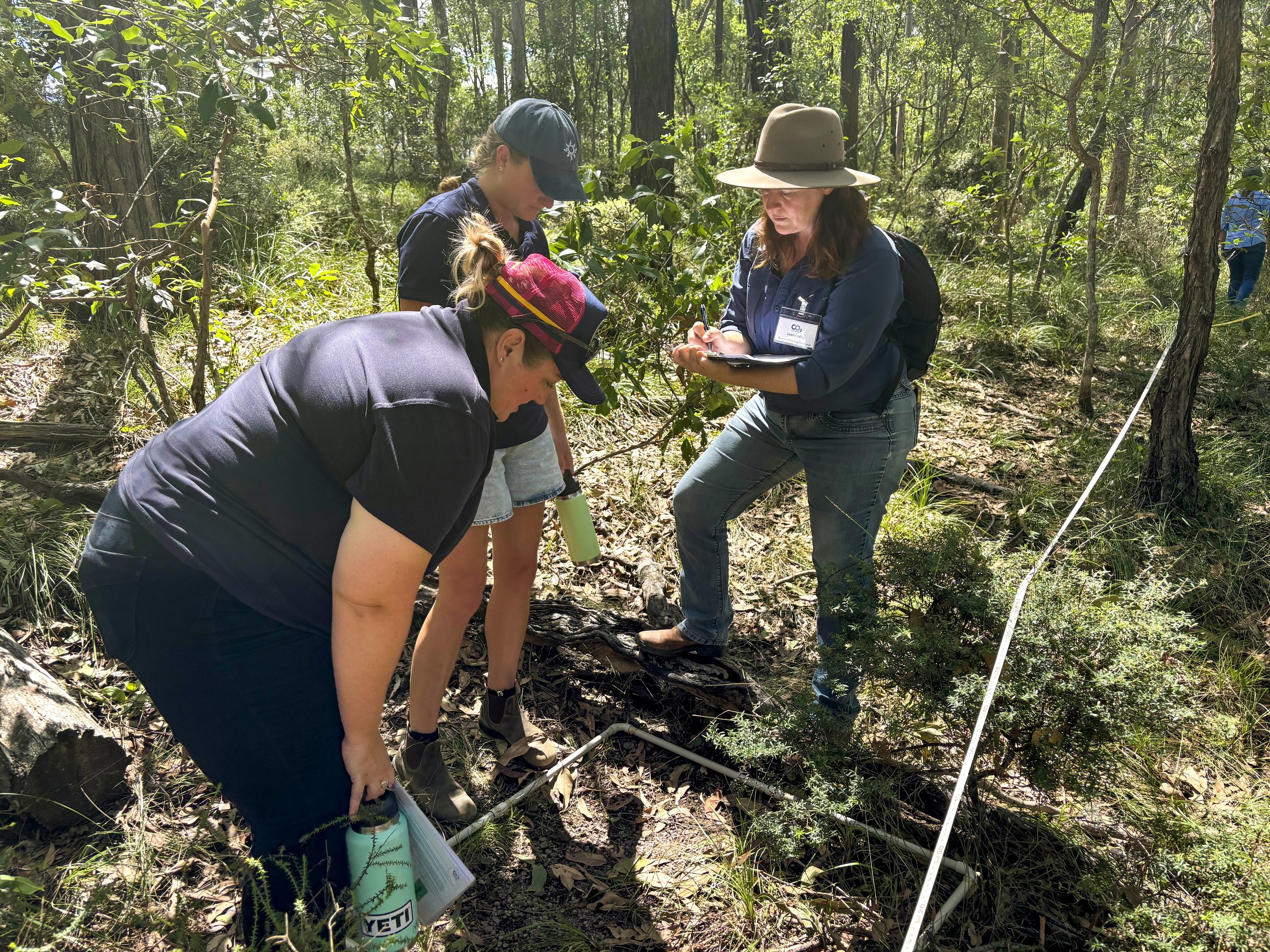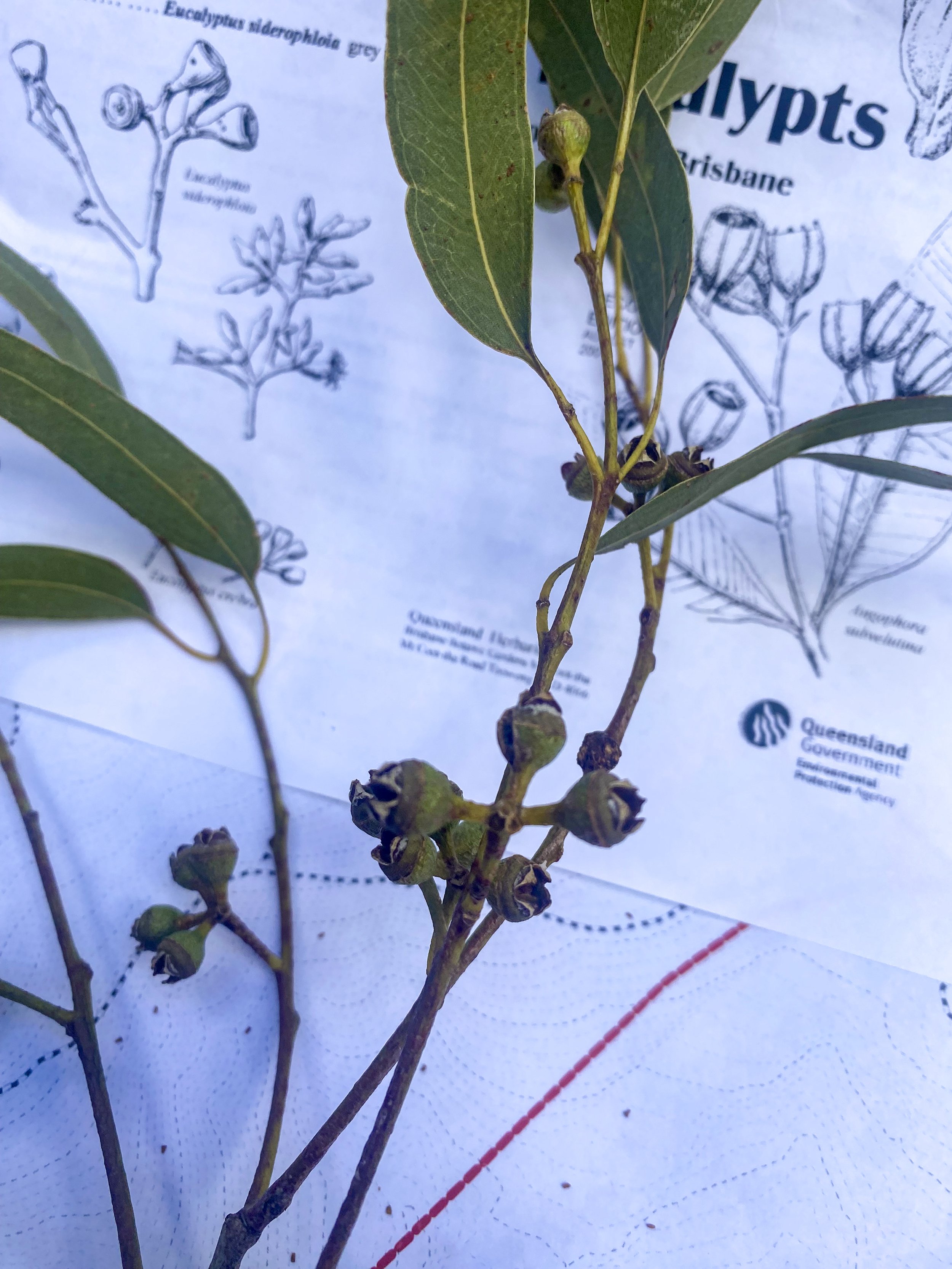Building Expertise in Vegetation Assessment with Hands-On Regional Ecosystem and BioCondition Training
BMRG Staff: Amy-Lee Provost, Caitlin Jones, and Leesa Kelly undertaking a quadrant vegetation survey.
Recently, Burnett Mary Regional Group (BMRG) staff participated in an intensive three-day training program focused on the Queensland’s Regional Ecosystem Framework, vegetation management legislation and BioCondition Assessment Methodology. Held at 'The Hut' in Chapel Hill, Brisbane, the training blended theoretical learning with practical fieldwork to strengthen our team's skills in vegetation community assessment and identification.
BMRG Project Officer, Tina Goodwin.
On the first day, staff explored land and vegetation classification, bioregional frameworks in Queensland, land zone determination, and regional ecosystem identification. 'The Hut,' nestled in the peaceful eucalypt forests at the base of Mount Coot-tha, provided an ideal setting to gain background knowledge and practical skills in the interpretation and implementation of vegetation community assessment and identification.
The second day took our team into the field at Toohey Forest Park, a large bushland reserve near Griffith University’s Nathan campus. Here, participants practiced reading the landscape, understanding geological influences on vegetation, and identifying regional ecosystem types. A memorable moment came with the unexpected sighting of a koala, reinforcing the importance of preserving these precious natural habitats.
On the final day, staff returned to consolidate their learning in a workshop setting, building further confidence in applying the BioCondition Assessment Methodology. Through detailed discussion and practical exercises, participants refined their skills in conducting vegetation condition assessments and scoring vegetation health accurately.
This comprehensive training has equipped our team with essential skills to enhance the quality of our environmental assessments. It has deepened our commitment to sustainable land management and strengthened our ability to support the preservation and restoration of Queensland’s diverse ecosystems. We look forward to applying these skills in our projects and sharing more updates from the field soon.








